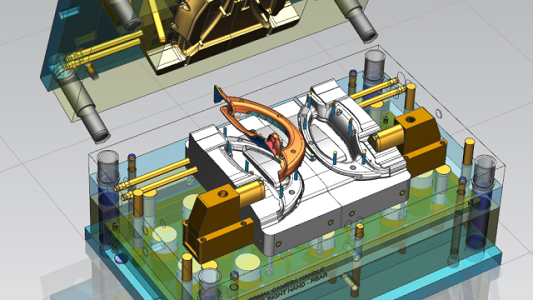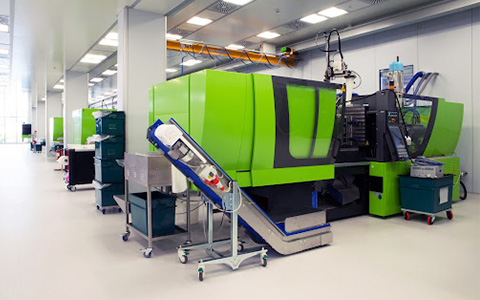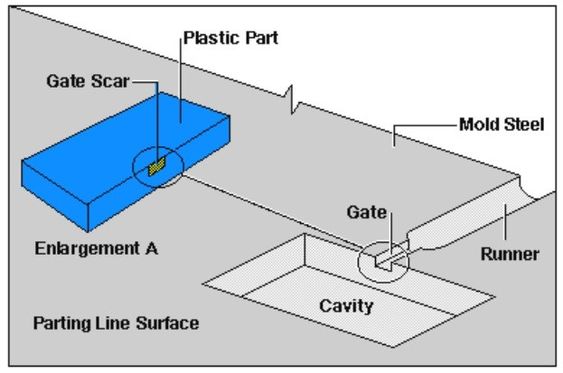Molding is a manufacturing process that includes shaping a fluid or malleable unrefined substance by utilizing a fixed frame; known as either a mold or a matrix. The form is for the most part an empty hole container, generally made of metal, where fluid plastic, metal, earthenware, or glass material is poured.
Most of the time, the mold is gotten from the initial pattern or template of the final item; its principal objective is to reproduce numerous uniform duplicates of the final product. As the fluid cools and solidifies inside the shape, the final configuration is accomplished. Its removal is worked with using a release agent or ejection pins.
We are surrounded by both standard and complex items that were fabricated because of the molding manufacturing process. Molding has happened over a prolonged period. Proof of its use has been found dating as far back as the Bronze Age when stones were used as molds to produce spear tips.
Modern Molding processes incorporate plastic infusion molding, Liquid Silicone Rubber (LSR) molding, overmolding, and embed molding.
What is Blow Molding?
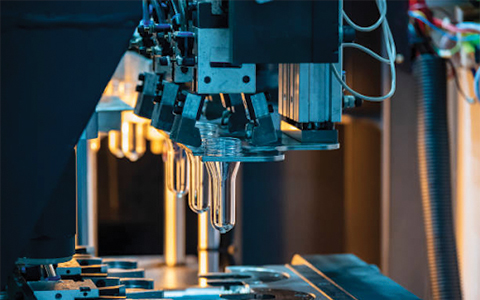
Blow molding is a blow molding process broadly utilized in the formation of bottles, containers, or some other plastic item utilized in the clinical business. Blow modeling requires a special combination of the art technology, high-level technical aptitude, and thorough execution of quality systems.
Since all custom blow molded applications will quite often have their own prerequisites, program explicit creation cells are typically planned, designed, and manufactured to guarantee that the project necessities are effectively met.
Plastic parts are cost-productive and thus play a significant part in a few enterprises from cars to medical. This has expanded the significance and usage of Blow Molding, particularly for the Medical Molding company and other different areas.
Types of Blow Molding
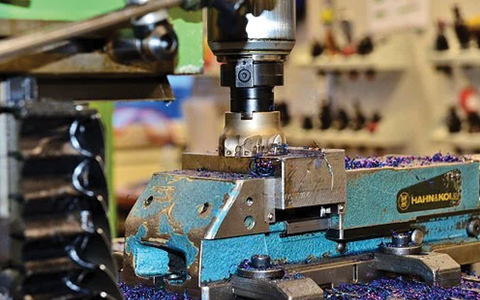
There are three types of blow molding process which are as follows:
- Injection Blow Molding
In Injection blow molding, a blow or center rod is utilized throughout the process. Initially a parison is infused into a split mold cavity around the bar. The parison that is framed looks like a test tube. The center rod moves the parison to the blow mold machine where constrained air makes the final shape. The rod then transfers and extrudes the finished product from the machine.
- Expulsion Blow Molding
Expulsion blow molding can be continuous or discontinuous. In continuous extrusion blow molding, a parison will be continually fed into the form and each form will be cut off with a blade as it forms. Discontinuous expulsion blow molding removes each new plastic from the metal mold when it is cooled, and the parison is fed into the mold solely after the former parison is expelled.
- Injection Stretch Blow Molding
Infusion stretch blow molding joins the injection molding and blow molding processes. The plastic is first formed into a strong preform, to make a threaded container neck. Once the preform cools it is fed into a stretch blow mold machine. The preform is then warmed using an infrared radiator and blown into a plastic bottle with constrained compressed air.
Blow Molding Advantages and Disadvantages
Advantages of Blow Molding
1. A revolution form of technology.
2. Blow molding process also helps in Contract Medical manufacturing.
3. Low cost as plastic products cost less than metal products and Blow molding is cheaper in comparison to others.
4. It allows multiple production methods.
5. It helps promote productivity.
6. Blow molding offers benefits of automation to a lot of Medical disposable manufacturing as it is 50% lesser in weight in comparison to metal products.
Disadvantages of Blow Molding
- Limited to hollow parts
- Low strength
- To increase barrier properties, multilayer parisons of unconventional materials are used (thus not recyclable)
- Trimming is necessary to make wide neck jars spin
- Limited to thermoplastics (rotational moulding can be used with thermosets)
Blow Molding Process
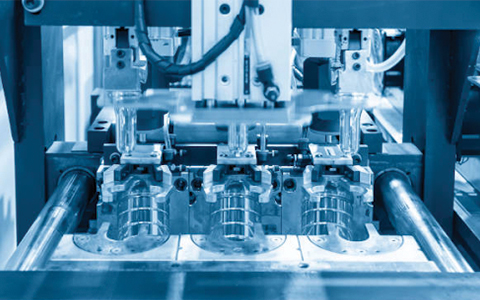
Present-day blow molding is to a great extent automated process, allowing the production of thousands of parts in a brief period. The process for this is as follows:
- Plastic pellets are fed into the machine through a container or screw depending upon the machine.
- Plastic melts and afterward gets formed into a parison, which seems to be a cylinder with an opening toward one side.
- Braced set up inside the mold.
- Compressed air expands the parison.
- The heated plastic inflatables occupy the space of the mold.
- After the plastic cools, the machine opens the mold and removes the part, sending it on to any relevant getting done, if any.
Blow Molding Applications
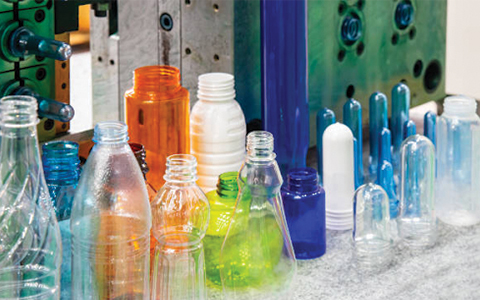
With an expansion popular for plastic parts, blow molding is utilized in various enterprises like defense, gadgets, aviation, medical, pharmaceutical, and some more. Its application in such ventures incorporates:
- Medical Equipment parts and instruments like valves and needles
- Knobs used in the controls or apparatuses
- Electrical parts and gadgets
- Military gear
- Water Bottles
- Plastic Buckets
- Liquid Containers
- Plastic Cups
- Mugs etc.
Materials used in Blow Molding
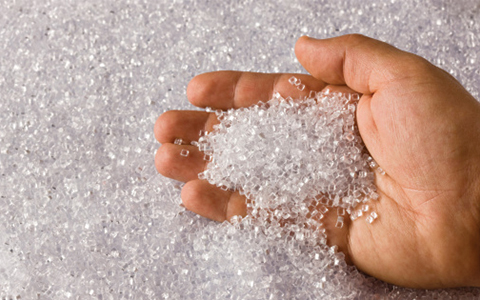
The materials used for blow molding include Polyethylene (High Density, Low Density, and Linear Low Density), Polypropylene, Polyethylene-Terephthalate (PET), and PVC.
What Is Injection Molding?
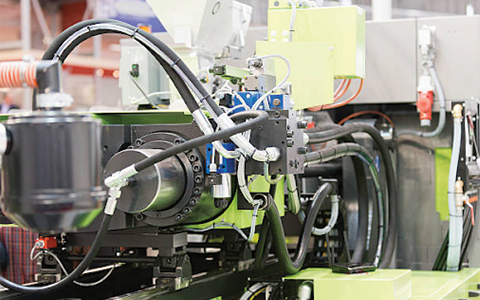
Injection molding is a forming process that utilizes molds. Materials like synthetic resins (plastics) are heated and liquefied, and afterward sent to the mold where they are cooled to form the planned shape. Because of the similarity to the method involved with injecting liquids using a needle, this process is called Injection molding.
With injection molding, distinct types of shaped parts, including those with complex shapes, can be persistently and immediately produced in huge volumes. Therefore, injection molding is used to make products in a wide range of enterprises.
Clean room injection molding is the most common way of processing plastic parts in an isolated room intended to lessen the risk of particles being contaminated. A lot of enterprises require their specific parts to be produced in a cleanroom environment for added well-being and safeguard. Injection molding is generally involved in the manufacturing process in the medical business, offering numerous benefits for different applications.
Medical plastic molding is used for medical gadgets, parts, labs, office hardware, and much more. Injection molding is also used by Med Lab consumables suppliers.
Types of Injection Molding
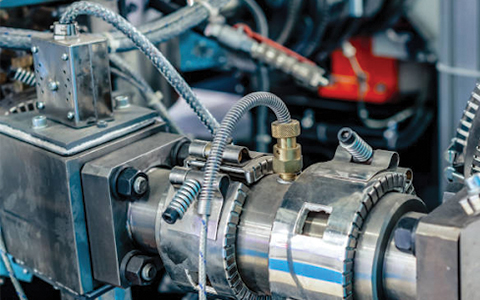
There are many different injection moulding process variations, including:
- Cube moulding
- Die casting
- Gas-assisted injection moulding
- Liquid silicone rubber injection moulding
- Metal injection moulding
- Micro injection moulding
- Reaction injection moulding
- Thin-wall injection moulding
Injection Molding Advantages and Disadvantages
Advantages of Injection molding
- Medical Grade Process Control and Reliability
Injection molding plans and designing are used to make quality. There is advanced modeling programming accessible that removes a significant part of the guesswork from the device plan.
Moreover, with present-day computerized controls on plastic injection molding machines, the interaction boundaries can be immediately tuned for optimal performance and to lessen the production lead time of injection-molded medical devices to a minimum. This will likewise help with reducing the expense of your medical devices.
- Medical Device Injection Molding Can Produce Devices in High Volumes
All injection molding projects, including medical ones, initially start with an injection modeled apparatus and die. To make a complicated shape could require making a similar complex mold tool, so there is an initial product plan and development speculation that should be viewed as before a single medical device is made. Hence, a lot of medical equipment parts manufacturers use Injection molding.
- Injection Molding Provides Ideal Solutions for Enclosures
Injection molding is particularly helpful while manufacturing cases and walled-in areas. It is in fact possible to utilize another process to make a container, for example, CNC machining or vacuum casting, and in some cases, there are valid justifications for doing such. Nevertheless, those other creative strategies would be a lot slower, consume more unrefined substances, and would bring about a generally high assembling cost per part.
- Plastic Injection Molding Provides Versatility for Medical Products
There is a substantial number of plastic resins to choose from for manufacturing and they are easily available in the commercial market. Also, fortunately, a significant number of these resins are reasonable for medical equipment as they are medical consumable.
These resins have mechanical and synthetic properties which are surely known so it is not difficult to pick the one that is generally fitting for its end use and climate.
Disadvantages of Injection molding
- Start-up costs are high
Since custom tooling should be made for every injection molded part, initial start-up costs are high, and this is not a lot economical for low-volume creation organizations. Tooling for a basic plan and a small production run can cost somewhere in the range of $2,000 and $5,000, but tooling for huge, complex molds prepared for full-scale production can cost a few times that.
Although you can reuse these molds over and over and save money on tooling costs down the line, it is worth considering how much molds cost upfront.
- Initial lead times are long
A CNC machined part can be conveyed within 5-10 days, and industrially 3D printed parts usually have lead times of 3-5 days. However, injection molding has a more extended lead time. It usually requires 5-7 weeks to fabricate tooling and 2 a month to create and transport parts.
- Configuration changes are costly
With 3D printing, you can basically transfer a document and print another part at whatever point you plan to change, yet that is not the situation with injection molding. In the event that you make a plan change, you’ll probably have to make another mold without any preparation, and that implies emptying additional time and cash into your undertaking.
Injection Molding Process
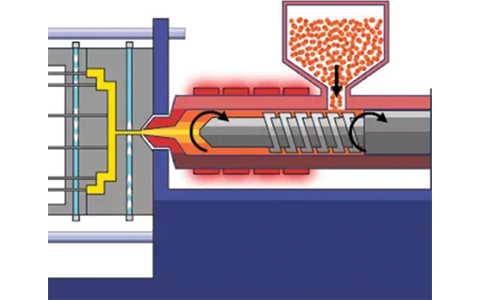
Firstly, the material enters the barrel, then the material is melted then mixed. After that sort size of the barrel is created and the mold is closed. Then, the Injection of the plastic into the mold cavity is done and the molten material is cooled. Finally, the mold is opened, and the part is ejected.
Injection Molding Applications
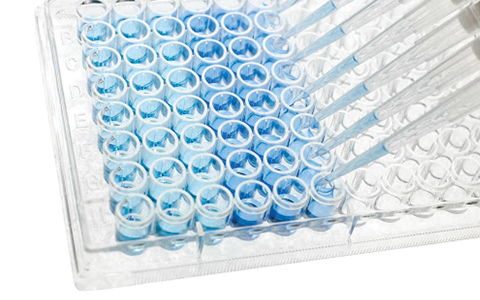
Injection molding is used for making complex shape parts of diverse sizes having less wall thickness. Typical parts like cups, containers, toys, plumbing fittings, electrical components, telephone receivers, bottle caps, automotive parts, and components.
Materials Used in Injection Molding
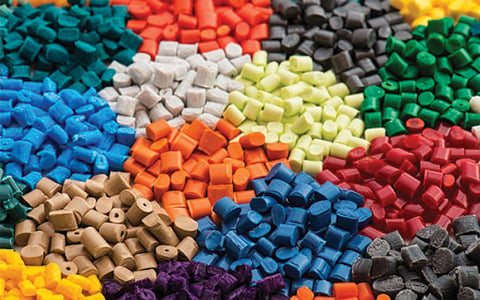
Materials utilized in injection molding are plastics, explicitly thermoplastics. There are many thermoplastics, however the most well-known thermoplastics used in injection molding are:
- Polypropylene
- Polyethylene
- Acrylonitrile Butadiene Styrene (ABS)
These three thermoplastic materials are used constantly. They are financially savvy, sturdy, and can endure the burdens of steady use. You probably use items produced using these three materials frequently, if not every day.
Blow Molding vs Injection Molding: Which One Is Better for Your Project?
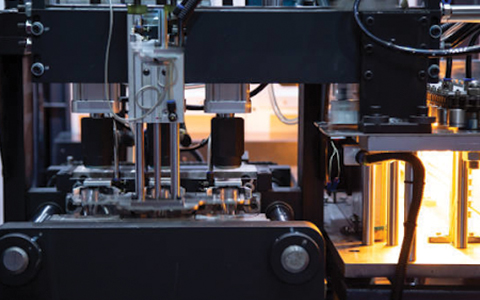
Blow molding is most appropriate for empty, generally rough, and normally single-piece item parts, for example, plastic containers, arena seating, kids outside toys, traffic safety products, and carrying cases.
Injection molding is great for applications requiring many-sided part calculations, tight tolerances, and accuracy repeatability in production.
- Investment
Blow molding is efficient but not necessarily highly technical. Whereas injection molding could be a bit pricier, they are exceptionally accurate and technical.
- Production Speed
Injection molding can deliver an incredible number of parts each hour. Speed relies upon the intricacy and size of the shape, anywhere between 15-120 seconds for every process duration. On the other hand, blow molding production can take some time.
- Product Produced
The significant distinction between injection molding and blow molding is the sort of item created. Basically, blow molding is intended to deliver empty, solitary compartments, like containers. But injection molding is utilized to create strong pieces, like plastic items. Eventually, blow molding is tied in with making an empty item.
This is likewise an interaction that has been performed for millennia, just blow shaping started with a manual, hand bend and physically blowing, or pushing, air into the item.
- Shaping Procedure
There is a significant distinction between blown and injection too. For injection, the plastic is fixed in the injection chamber and shaped through the entire process. But the blow mold starts when the mold is eliminated from the plastic, which gives it more freedom for the blowing to grow the product to arrive at the vital, final size.
- Utilization of Air
Air is the most terrible foe of injection molding. If by chance air is present during the manufacturing process, it can make air pockets or bubbles. These irregularities make points of weakness in the item, at last leaving it flawed and, likely tossed out. With the blowing method, the air is vital.
Blow molding rotates around air forced into the shape to push out and extend the product. There is a limited amount of air the shape can hold prior to isolating and leaving holes in the molten product. At last, however, without air, blow molding is unimaginable to expect to perform.
Contact Us for More Details About Injection Molding

The process of plastic insert molding and overmolding might often appear similar to you however, they are different in several aspects and also in terms of certain applications. If you are still in doubt regarding the two procedures of molding contact us for a detailed explanation and understanding of the two.
SeaskyMedical is a reputable injection molding organization that provides efficient molding for medicinal or surgical equipment. Some of the factors that make us a preference of several businesses in the medical field are:
- We interpret your need and try to create a detailed model and design for efficient product development.
- Our professionals work closely with the resin suppliers to get the best and most suitable raw materials for the products.
- With advanced technology and great expertise, our skilled experts mold the material with utmost precision to meet your business requirements.
- We have ISO 8 cleanrooms to meet the cleanliness requirements for medical products.
Contact us if you require any other details about our injection molding.

